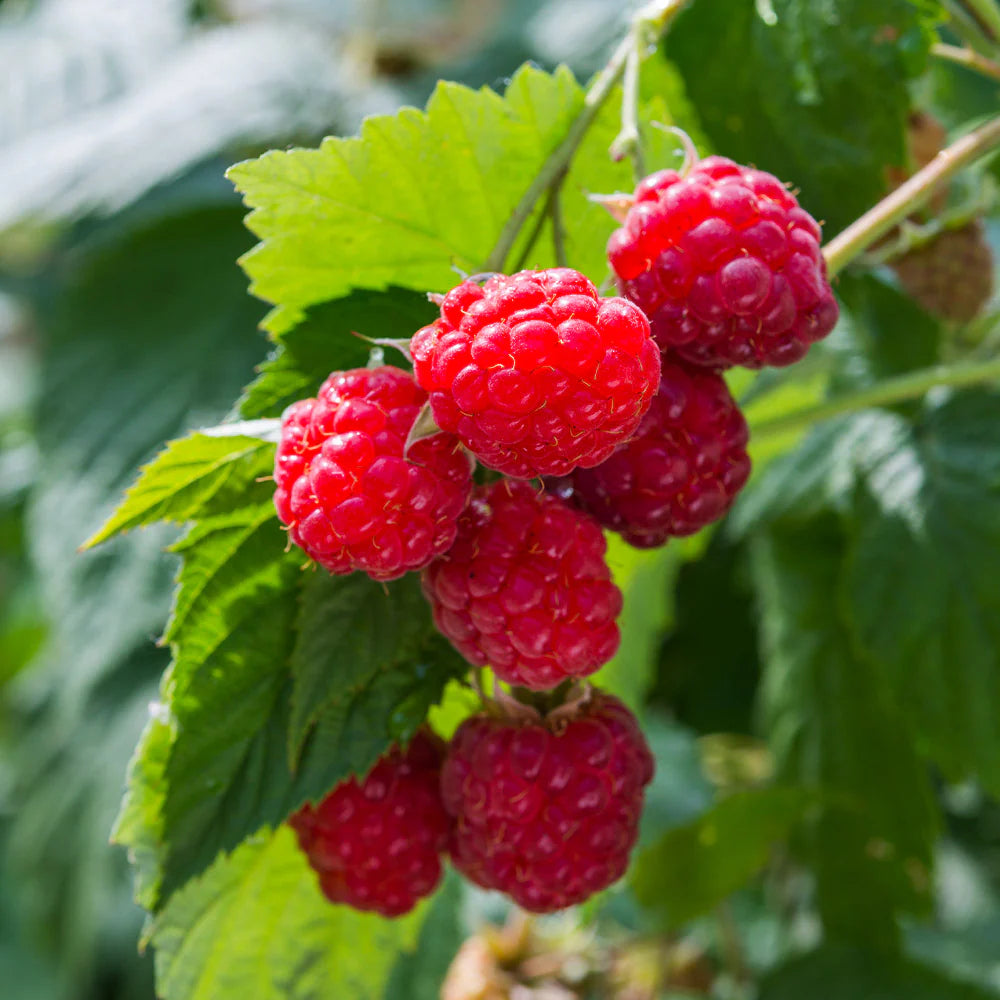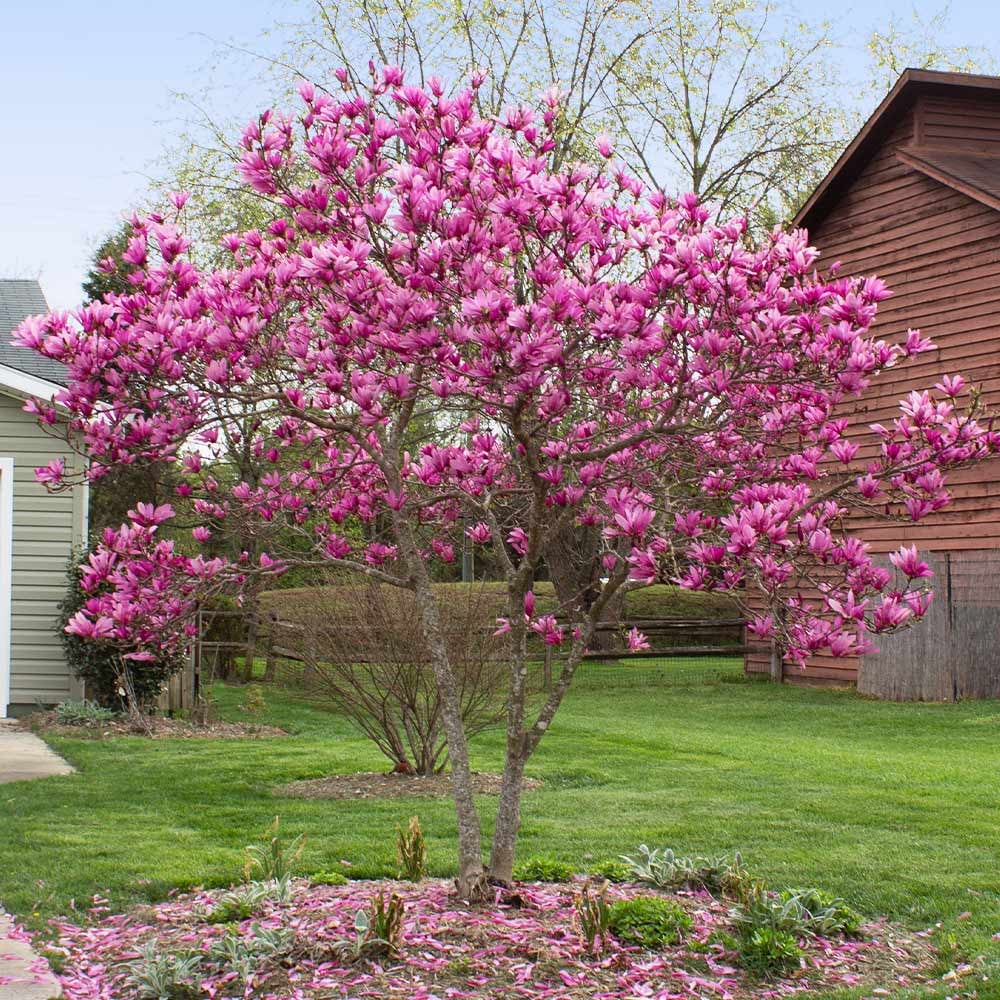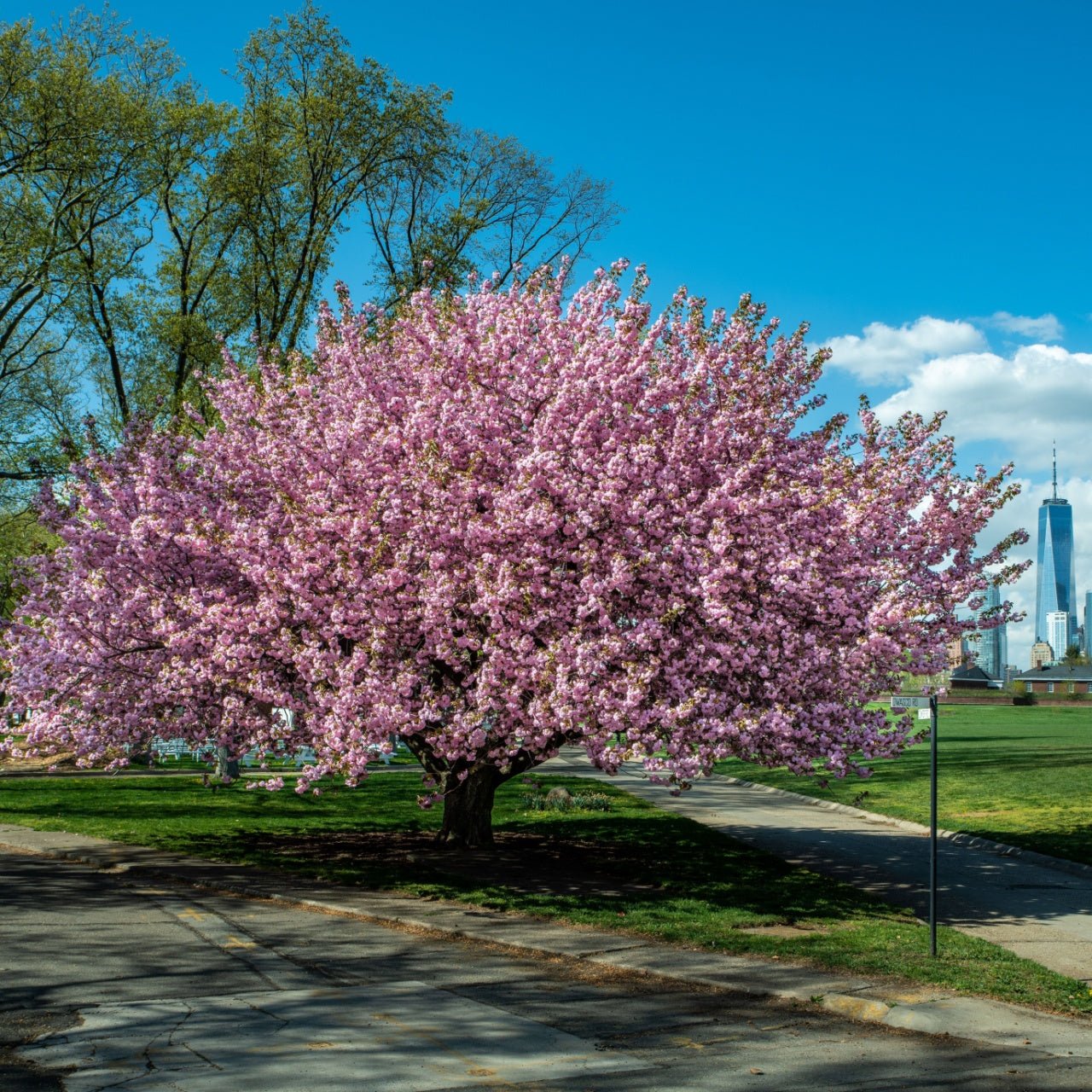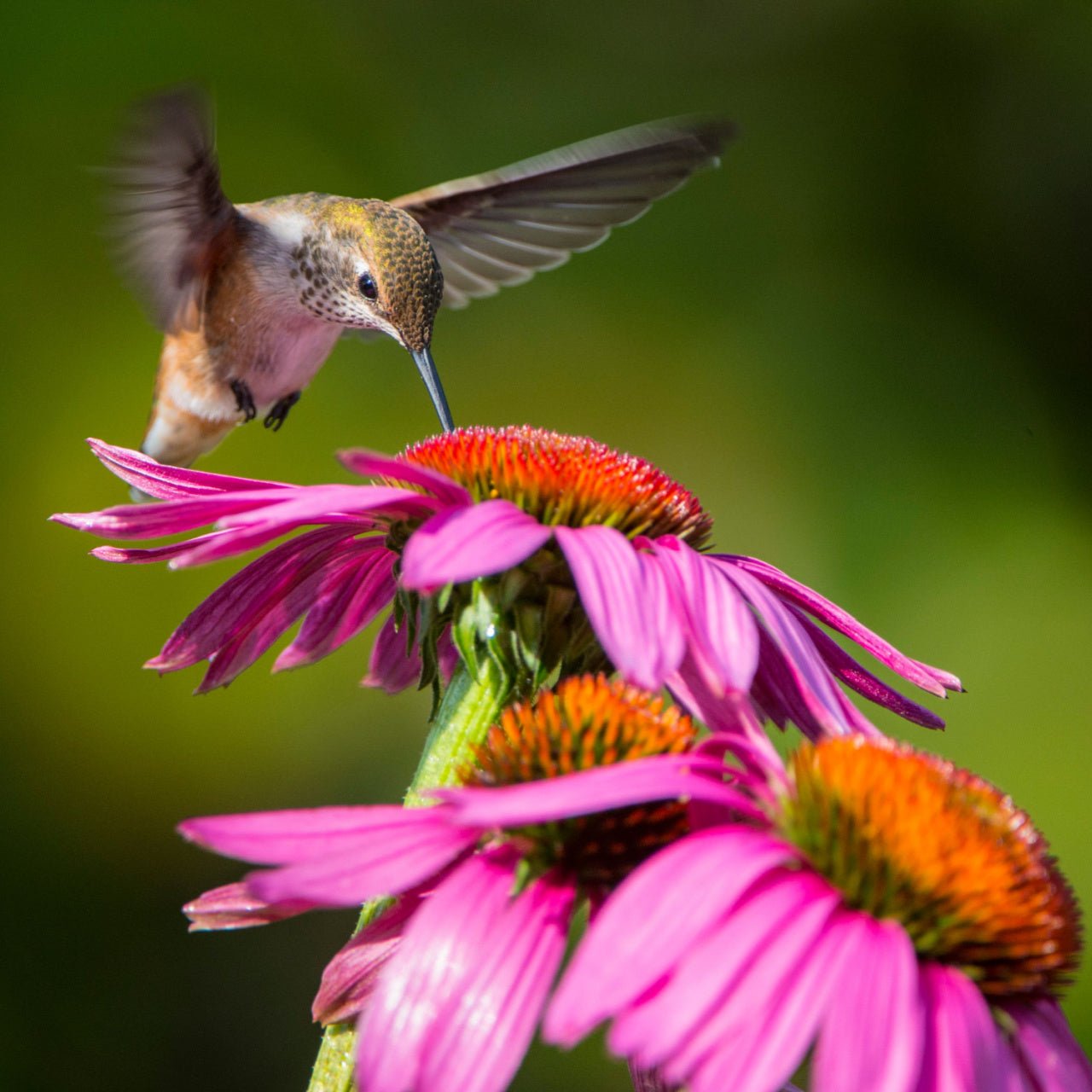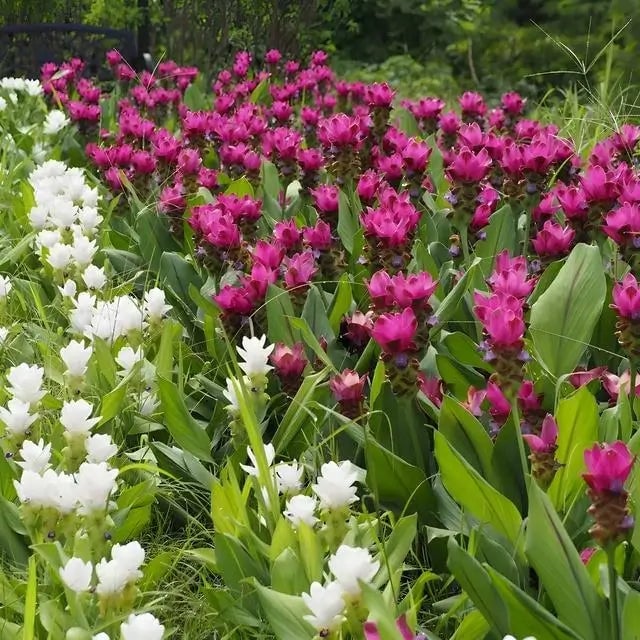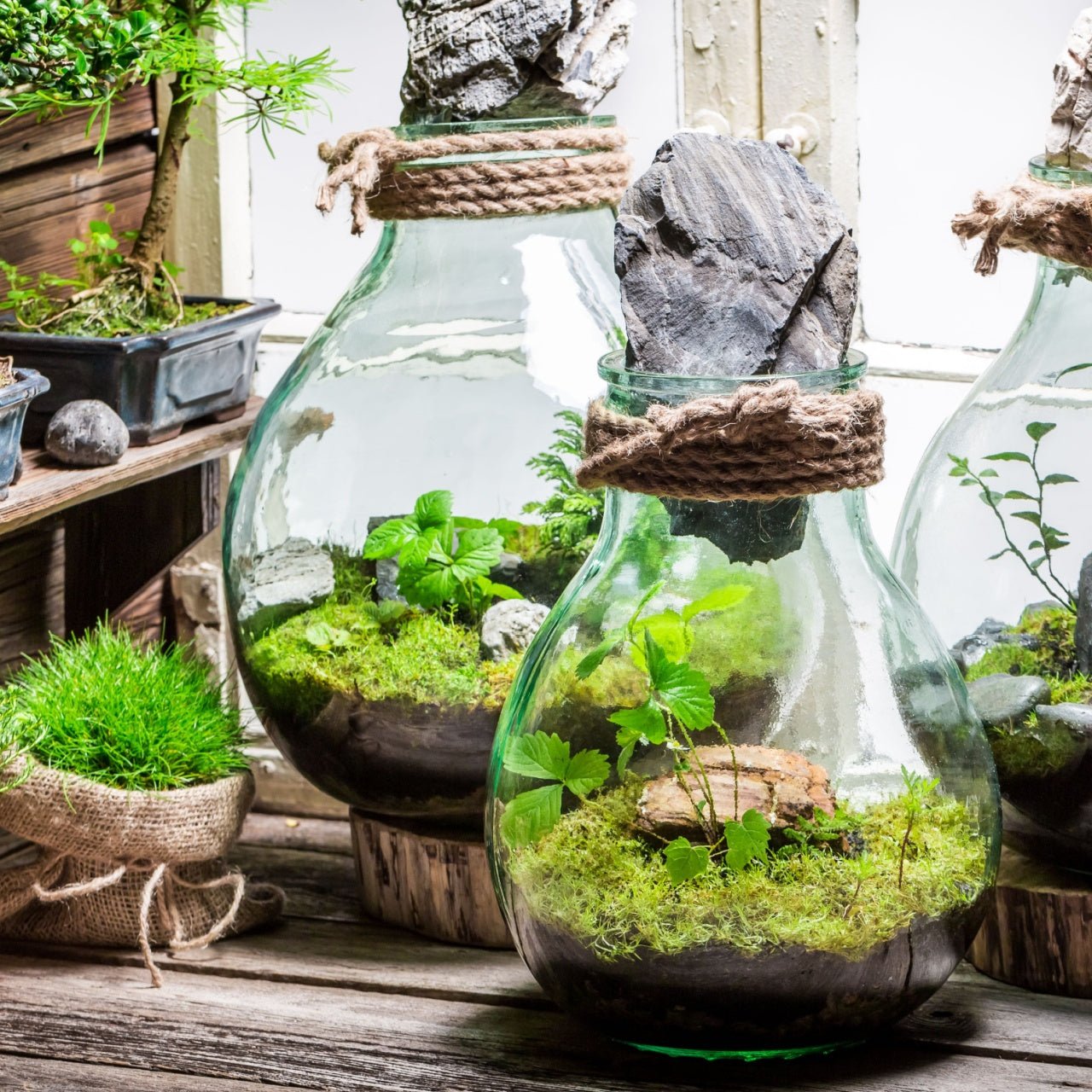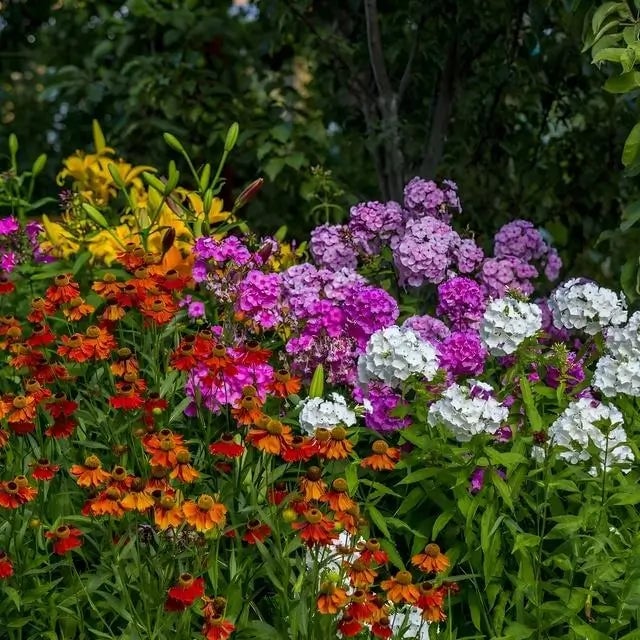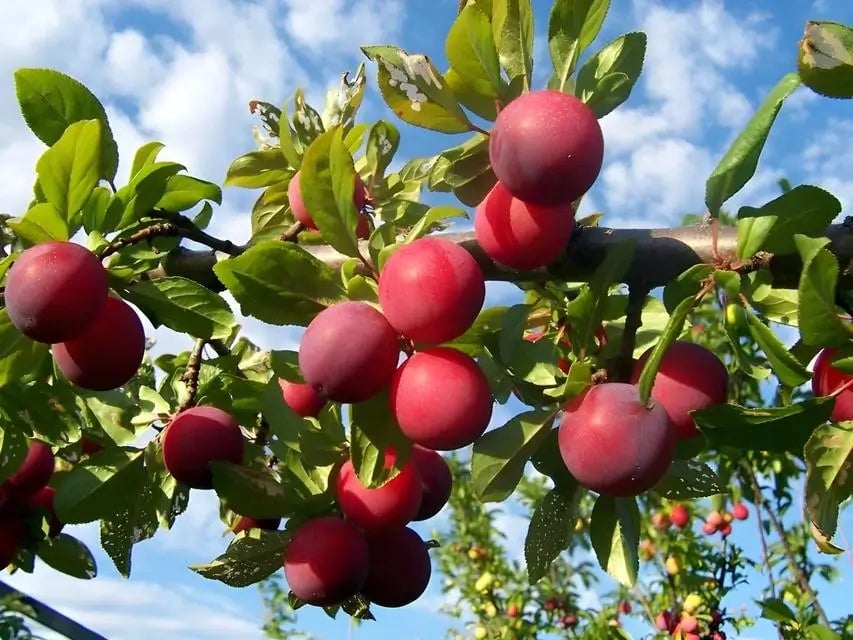
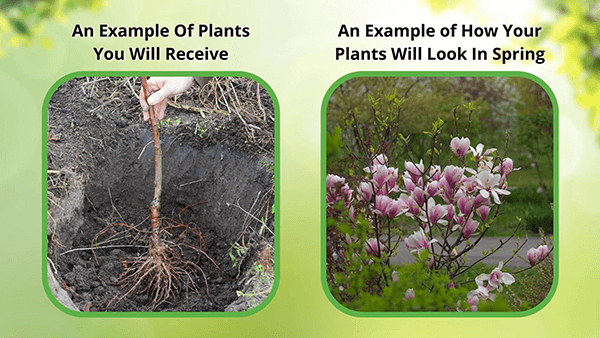
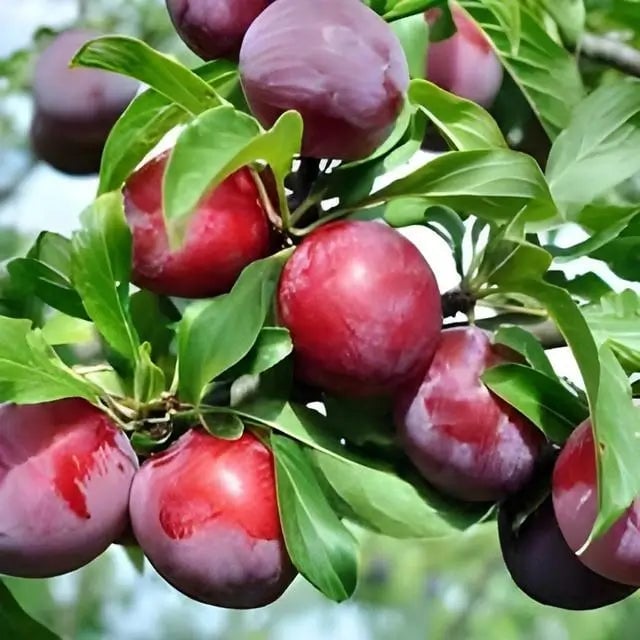

Plum Fruit Tree
Thrives in Zones 3 - 10
Attracts beneficial pollinators
Increases property value significantly
Enhances garden's aesthetic appeal
Ships in
Ships Spring 2026Plum Fruit Tree - Prunus domestica
The Plum Fruit Tree (Prunus domestica) is the fruit tree you didn’t know you needed in your orchard. Gorgeous dark purple fruits shine and are surrounded by lush green leaves.
Plant Details - Plum Fruit Tree
Family: Rosaceae
Light Requirement: Full Sun
Water Needs: Moist
Height: 20 - 25 ft.
Spread: 10 - 20 ft.
Growth Rate: Fast
Bloom Time: Spring
Flower Color: White
Wildlife Value: Attracts bees, butterflies, birds
Landscape Uses & Maintenance – Plum Tree
The Plum Fruit Tree is a superb fruit tree to add to your home or landscape.
Flowers will bloom in spring and are pale pink to white in color, making for a pretty display.
Plant this tree in your orchard or use it to line your border for easy to reach fruits. Excellent as a focal point for a yard.
Plant in a location with full sun. “Full sun” is a location that gets at least 6 – 8 hours of sunlight per day.
These trees are not self-pollinating, so make sure to buy and plant two trees to ensure that you will have fruit set. Planting two trees at the same time ensures both trees are at the same level of maturity to have fruits.
Prune branches in late winter. Look for diseased, damaged, or rubbing bark that will create fungal or bacterial issues. Thinning out the canopy is a great way to ensure plenty of sunlight makes its way down into the tree and dries it out in the morning or after storms. Without this, you may have more fungal issues with your leaves, bark, or fruit. As your tree matures, it is important to keep your branches fewer as fruits will load the branches and create significant weight.
Apply a balanced fertilizer of nitrogen, phosphorous, and potassium in early spring for optimal health and vigor.
The nectar rich flowers are attractive to bees and other pollinators. The fruits attract plenty of wildlife to your yard, including squirrels and other mammals.
Noteworthy Characteristics
The Plum Fruit Tree will take up to five years to start producing fruit, so don’t wait any longer to plant your new orchard!
This Is How Your Plants Will Look upon Delivery

Bloom Season
Spring
Bloom/Foliage Color
White
Height at Maturity
Under 25 Feet
Care
Plum trees thrive in well-draining soil and require regular watering, especially during dry periods. They should be pruned yearly to maintain shape and clear dead or diseased branches. In early spring, they should be fertilized to encourage healthy growth and fruit production.
Plant Reproduction
Plum fruit trees spread through seeds, grafting, and root suckers.
How to Grow and Care for Fruit Trees
Fruit trees are a rewarding addition to any landscape, offering fragrant blossoms in spring and fresh, homegrown harvests in summer or fall. Popular varieties like apple, peach, pear, and plum thrive in full sun and well-drained, nutrient-rich soil. Choose trees suited to your USDA zone, and plant in early spring or fall for the best root development.
Dig a hole twice as wide as the root ball and deep enough so the root flare sits just above the soil line. Backfill with native soil, water deeply, and apply mulch around the base—keeping it a few inches from the trunk—to retain moisture and suppress weeds. Water regularly during the first growing season, especially during dry spells.
Prune annually to shape the tree, improve air circulation, and boost fruit production. Fertilize in early spring with a balanced or fruit-specific fertilizer. With proper planting, seasonal care, and a little patience, fruit trees will reward you with beauty, shade, and bountiful harvests year after year.
Shipping date depends on the date displayed and chosen when you order from the product's page.
We do not accept returned plants. If you purchased an extended warranty we do accept claims, please navigate to the warranty page for instructions HERE





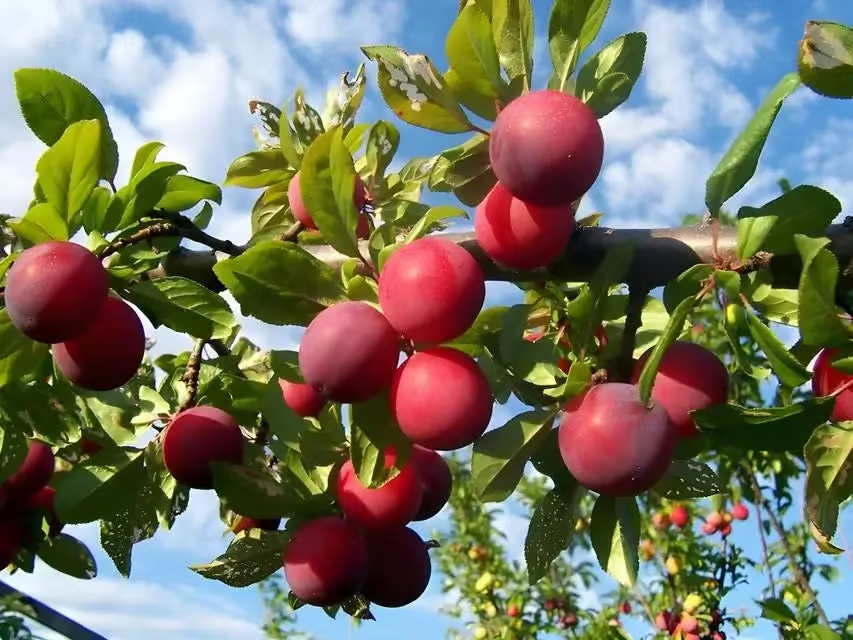
Delicious Fruit:
Enjoy homegrown plums that are juicy, sweet, and perfect for eating fresh or making preserves.
Self-Pollinating:
Many plum varieties are self-pollinating, which means you don’t need multiple trees to produce a bountiful harvest.
Compact Size:
Ideal for smaller gardens, this tree can fit into various garden spaces while still producing ample fruit.
Attractive Foliage:
The Plum Fruit Tree features lovely blossoms in spring and vibrant leaves in autumn, adding beauty to your garden year-round.
Header
Use this content to share information about your store and products.
Frequently asked questions
Still have a question? Contact us here.
Yes, we ship all over the world. Shipping costs will apply, and will be added at checkout. We run discounts and promotions all year, so stay tuned for exclusive deals.
It depends on where you are. Orders processed here will take 5-7 business days to arrive. Overseas deliveries can take anywhere from 7-16 days. Delivery details will be provided in your confirmation email.
You can contact us through our contact page! We will be happy to assist you.








